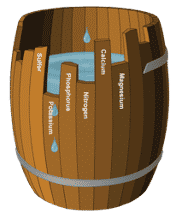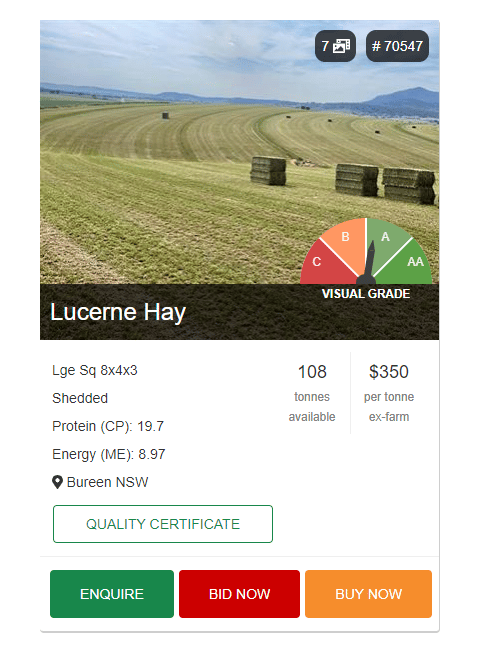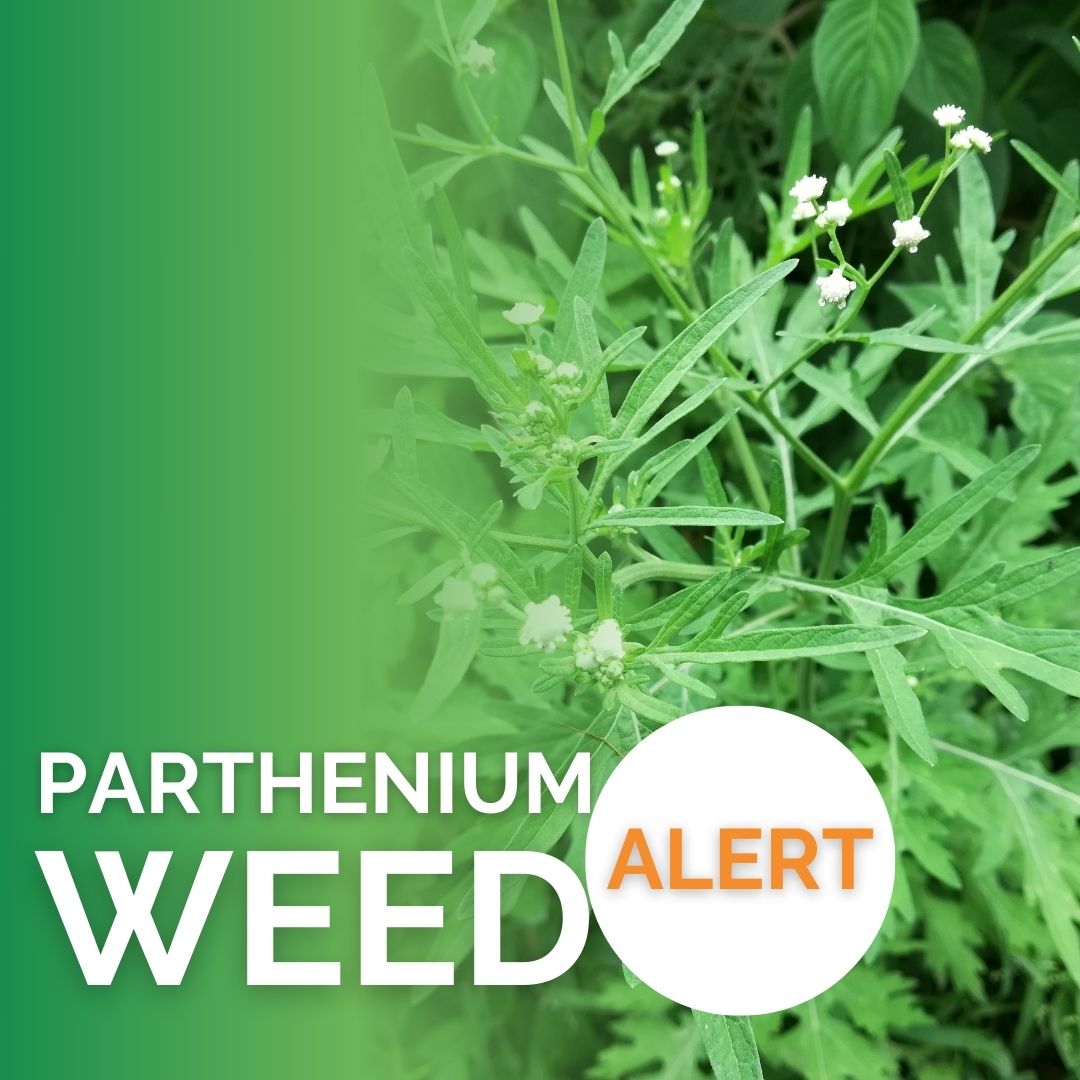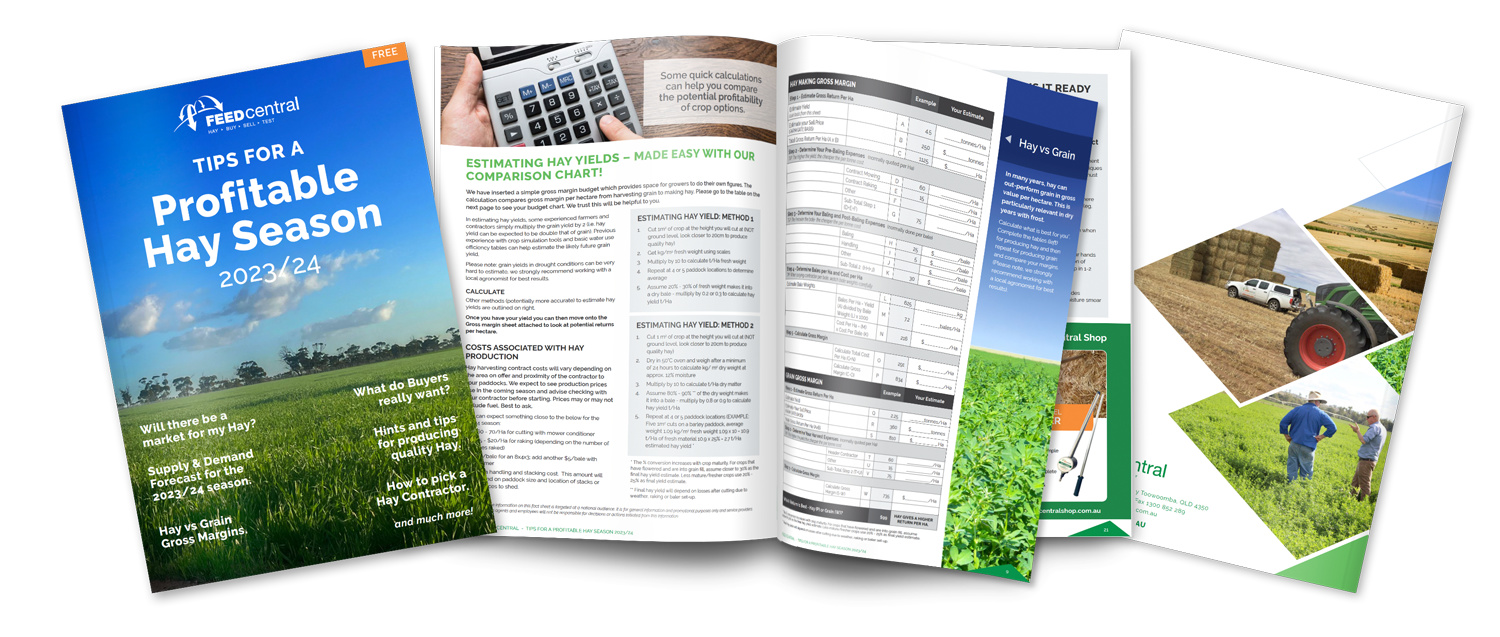Buyers Update (By Neville Janke)
There sure is a spring in the step of buyers at the moment. Yes, we are noticing a lot of market activity and it is very welcome.
Buyers are looking at different lots and making plans for winter feeding, as night-time temperatures slowly start to drop.
Right now, Straw is in short supply and demand is starting to increase. Opportunity feeders and backgrounding operators are looking to source and secure quality protein hay, which is putting pressure on the remaining lots of Vetch and Lucerne in our system.
We’re encouraging buyers to go through their feed plan for the next 6 months, so they can source and secure their requirements now. Our website is very easy to use and available 24/7, or you can call and speak to us.
High quality, good value lots are being snapped up, and in large quantities too! Winter always has a bite to it, so be prepared to combat that with your feeding schedule.
Sellers Update (By Jill Parker)
Buyer activity has prompted our sellers to be proactive in keeping their lots up to date by checking their quantities and prices to ensure everything is set for a sale.
It is terrific to see so many quality photos accompanying listings; it has become a real feature of our website. Here are some examples of the lots and photos you can see online:
Once again, market focus has been on shedded product, with a high visual grade and minimal weather damage. The majority of our sales have been for FCA visual grade Lucerne Hay, Vetch Hay, Wheaten Hay, Straw, and in the northern region, Rhodes Grass. However, small volumes of FCB Vetch, Straw and Cereal hay are beginning to move as well, so there is a variety of activity in Aprils hay market report.
As we approach the colder months, some growers are now preparing for sowing. There will be more on this in the coming weeks.
Test Update (By Kimberley Detmers)
Last month I travelled to Springsure, Central Qld, for a Producer Field Day, hosted by Nutrien Ag Solutions. The day focussed on how the testing of inputs and outputs (feed, water and manure) in cattle production systems can help producers significantly improve gains.
The information gleaned from testing enables producers to make decisions on supplementing their animals with the limiting nutrient(s) in their diets. The limiting nutrient will change season to season, and will depend upon climate conditions, animal husbandry goals, etc. Therefore, it is a good idea to perform periodic testing of your inputs and outputs throughout the season – measure it to manage it!
The benefits of soil testing were also touched on during the field day. This type of testing can help inform you of which limiting nutrients should be increased or managed for optimal pasture growth, and thus is a cost effective method to assist you in managing fertiliser application on your property.
You can send soil samples to our lab with testing prices starting from $158.

Law of the minimum: yield is proportional to the amount of the most limiting nutrient, not by the total nutrients available.
This is best visually depicted by the broken barrel. The staves on the barrel represent all nutrients required for production. This includes an array of minerals, protein, amino acids, fibres, energy etc. The water level (yield) is only available to be filled as high as the shortest stave (the limiting nutrient). By repairing the lowest stave (supplementing with the limiting nutrient), the barrel is able to hold more liquid (increase yield).
Better balanced nutrition will optimise production.

-
Why Does Hay Get Dusty And What Causes It?
Author Neville Janke Neville Janke is a qualified agronomist and Horticulturist with over 20 years of experience guiding farmers in the Agricultural and Horticultural industries. With this experience, Neville has been helping long-term users of Hay and grain to experience the Feed Central way of sourcing quality Feed for hungry cattle. View all posts



